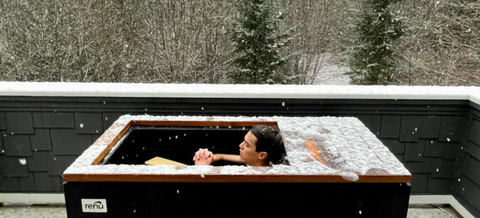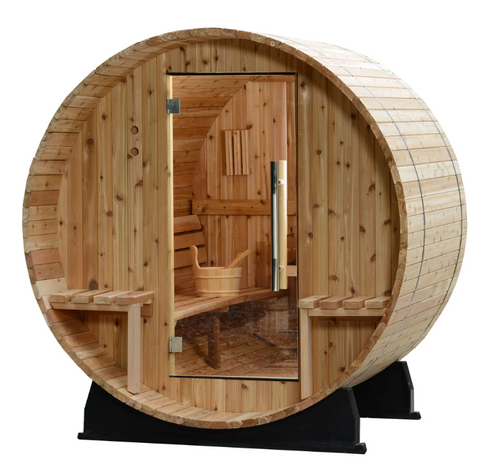What Is Cellulite?
When people talk about cellulite, they mean the dimpled, lumpy appearance of fat under the skin. Usually, cellulite-prone areas include thighs, hips, buttocks, and abdomen. While cellulite isn’t a serious medical problem, it’s not something people enjoy the look of, impacting the way people feel about their self-image.
Normally under the skin, fibrous connective cords tether the skin to the muscle underneath, with a thin layer of subcutaneous fat in between the two.
When fat accumulates, the fat layer pushes against the skin while the connective cords continue to pull at the skin from underneath. This push or pull between the fat and connective cords is what creates the dimpled appearance of cellulite on the skin’s surface.
Why Do Women Have More Cellulite Than Men?
Women generally have more subcutaneous fat and fewer septae, the connective cords that tether the skin to the muscle underneath. As women age and their skin begin to lose some of its elasticity, cellulite becomes more of an issue because there’s less tension to hold the fat layer down, creating dimpling in skin texture.
Non-Medical Ways to Decrease Cellulite
The truth is, the most basic way to get rid of fat cells that cause cellulite is a healthy diet, regular exercise, and plenty of hydration. These healthy habits will not only help with weight loss but generally minimize fat buildup under the skin, reducing the appearance of cellulite without professional treatments.
While healthy living is effective in reducing cellulite, if you already have cellulite, it may feel like it’s next to impossible to get rid of it through good habits alone. So what are some other ways to eliminate cellulite without more intensive medical intervention?
Massage for Connective Tissue Rejuvenation
To some extent, the appearance of cellulite is increased by fluid buildup under the skin. To release cellular toxins and excess fluid, an expert massage technique can help by promoting better blood flow in these areas, along with helping to break up fat cells for a smoother skin appearance.
Medical Methods to Remove Cellulite
When it comes down to it, cellulite is a difficult condition to treat. Methods such as CoolSculpting may or may not work for cellulite reduction. That said, more intensive methods of medical intervention for cellulite are showing evidence of being more effective.
Liposuction Removes Fat Cells, But Not Cellulite
Perhaps the most commonly known form of medical cellulite reduction is liposuction. During this procedure, a doctor inserts a narrow tube under the skin that uses strong suction to remove fat from areas such as the belly, buttocks, and hips, considerably reducing fatty buildup in a short amount of time.
A major downside to liposuction, however, is that it technically doesn’t remove cellulite. Depending on a person’s body and skin integrity, liposuction could even worsen the appearance of cellulite because of the loss of skin surface tension from the rapid removal of large amounts of fat.
Thankfully, some newer and less invasive innovations in medical cellulite treatment are beginning to emerge as solid alternatives to liposuction. These innovations in cellulite reduction include cold water immersion, lasers, light, pressure, and radiofrequency treatments.
While none of these methods are able to get rid of cellulite forever, they have been proven to reduce the appearance of cellulite in many patients. Let’s examine them further.
Lasers, Topical Treatments, and Devices
Cellulite treatments are categorized by the FDA in a few different ways: topical treatments, non-invasive procedures, and surgical interventions.
Topical Treatment
The unfortunate reality is, that it’s unlikely for anything topical to work because it has to be absorbed very deeply to reach the subcutaneous fat layer. So far, there’s no strong evidence that topical treatments like this exist yet. That said, some find retinol (Vitamin-A) creams to tighten the skin’s surface, helping to slightly reduce the appearance of cellulite.
While many herbal extract manufacturers claim to reduce cellulite, there’s little evidence to support these claims, so take them with a grain of salt.
At the end of the day, most topical treatments are hardly effective, if at all, and they often cost a lot of money. What’s worse, some could even harm your skin if you don’t use them correctly. Before using topical treatments, it’s always best to chat with a medical professional first.
Lasers and Other Treatment Devices
Lasers and devices for cellulite reduction are classified from Class 1 to Class 3, with higher classes being more intensive and requiring more caution.
Class 1 Treatment Devices
One example of Class 1 devices is endermology machines, which essentially suck up the skin and iron it out, similar to the idea behind a massage. While some find these treatments mildly effective, the biggest downside is they only provide a temporary improvement, with visible results sometimes only lasting a few weeks.
Class 2 Treatment Devices
When it comes to Class 2 devices, it’s not necessary to be a healthcare professional to administer treatments. These devices include Vanquish, Triactive, and VelaSmooth. There is still training required to operate these devices, so it’s important to find someone experienced to prevent issues. Similar to Class 1 treatments, Class 2 treatments require repeat visits to maintain cellulite reduction results.
Class 3 Treatment Devices
Class 3 devices include brands such as Cellulaze and Cellfina, which are far more intensive and often necessitate a sedative or being put to sleep for treatment session comfort. These treatments work by zapping the connective fibrous bands under the skin.
There’s also some downtime involved afterward. The good thing is, these treatments are more permanent to an extent, lasting 5-10 years for some folks, and are generally a quick fix that can provide amazing results.
Does CoolSculpting Treat Cellulite?
Another cellulite reduction therapy that’s become widely known is CoolSculpting, sometimes called body contouring. This non-invasive procedure is also called Cryolipolysis, which is the freezing of fat cells under the skin. While some find this treatment effective on the sides of their torso, it’s generally less effective on the legs.
Cold Water Immersion for Cellulite Reduction
Ice Bath for Cellulite
One of the primary benefits of cold water immersion is the promotion of blood flow through cold exposure and flushing away toxins throughout the body with the help of cold showers. This stimulation of blood flow and lymphatic system function can help promote healthier skin as well, helping reduce the appearance of cellulite.
When you cool the surface of the skin considerably, blood circulation is slowed. After cold water immersion, blood flow increases, cycling circulation back into high gear. This cycling helps improve vascular health, including the capillaries on the skin’s surface.
Another skin health benefits of cold therapy are the alleviation of fluid retention, another contributing factor to the appearance of cellulite.
Other Health Benefits of Cold Shower or Ice Baths
Ice cold water immersion through cold water therapy comes with various benefits like prevention of delayed onset muscle soreness, increased blood flow, immune system boost, and mental and physical recovery for the human body.
Home Cold Therapy for Cellulite Treatment
To easily treat your entire body for cellulite, the convenience of cold water immersion therapy anytime is made possible by RENU. We hand make all of our cold plunge tubs 100% in the USA and provide our customers with the best warranty coverage on the market.
With a wide array of design choices from cabinet color to breath deck wood finishes, you’re sure to find the perfect cold tub to match your home's design features.
Reach out to the team at RENU Therapy today to learn more about how you can get cold water immersion therapy at home to reduce the appearance of cellulite!
















